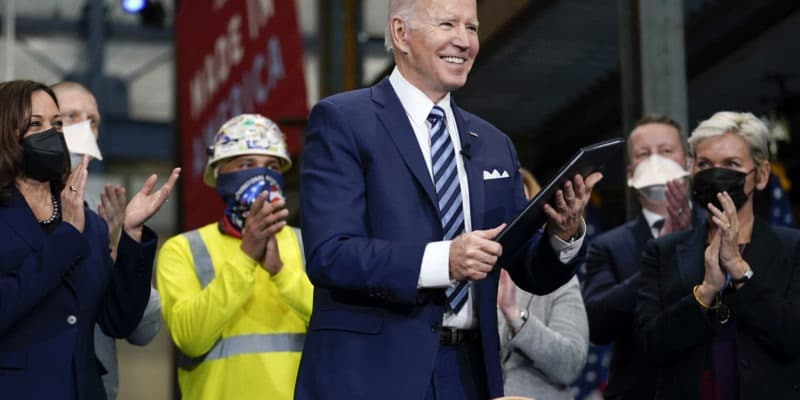Elizabeth Warren
Chrissy Lynch
August 6, 2024
In the past three years, the Biden-Harris administration has delivered more than $20 billion in federal investment to Massachusetts. Thanks to four historic pieces of legislation — the American Rescue Plan Act, Infrastructure Investment and Jobs Act, CHIPS and Science Act, and Inflation Reduction Act — the United States is building roads and bridges, expanding broadband access, upgrading public transit and energy infrastructure, switching to electric school buses, funding research and innovation, supporting firefighters, and enabling community projects.
When these federal dollars flow into Massachusetts, project labor agreements help ensure that they support job growth. With a long history in both the public and private sectors, PLAs are collective bargaining agreements between workers and contractors that ensure good wages and benefits, safe working conditions, and sustained investment in the local economy and workforce. Under a PLA, Vineyard Wind will power 400,000 Massachusetts homes and businesses and generate nearly 1,000 union jobs — while it reduces emissions by 1.6 million tons and energy costs by $1.4 billion.
PLAs also ensure that federally supported jobs create meaningful opportunities across the board. Currently, Massachusetts Building Trades Unions train 80 percent of all apprentices of color and 88 percent of all women apprentices in our state, and they have been critical to achieving the Commonwealth’s diversity goals for construction. Under a PLA, Encore Boston Harbor casino employed more women than any project in history.
Those opportunities make a real difference. Nationwide, collective bargaining agreements raise wages for workers by 10.2 percent on average. They also help close racial wage gaps, boosting pay for Black workers by 13.1 percent and for Hispanic workers by 18.8 percent, and narrow the gender wage gap from 78 cents on the dollar to 83 cents.
Even so, some take issue with PLAs. To skeptics, we say, first, that if Massachusetts ditched PLAs, we’d lose out on federal funding that is tied to them. But it’s more than that. Multiple studies have found that PLAs do not increase project costs. In fact, to the extent that PLAs support union standards, costs are actually lowered. A 2022 study of 1,550 US construction projects found that use of union labor reduces overall costs by 4 percent.


